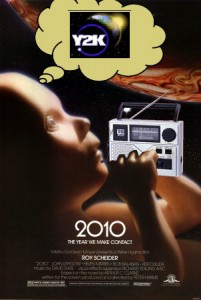 Today there are close to 1000 more noncommercial, locally-programmed community radio stations on the air in the US than a decade ago. The reason for this is the low-power FM radio service created by the Federal Communications Commission in 2000. While Congressional intervention cut the new service off at the knees at the end of that year, the creation of LPFM is an important event that provided crucial recognition for the value of hyper-local community radio.
Today there are close to 1000 more noncommercial, locally-programmed community radio stations on the air in the US than a decade ago. The reason for this is the low-power FM radio service created by the Federal Communications Commission in 2000. While Congressional intervention cut the new service off at the knees at the end of that year, the creation of LPFM is an important event that provided crucial recognition for the value of hyper-local community radio.
By the end of the 1990s the FCC was feeling a lot of heat about radio. From one side were complaints about the steep decline in local service brought on by the great loosening of ownership restrictions in the 1996 Telecom Act. On the other side broadcasters were haranguing the Commission about the rise in unlicensed “pirate” broadcasters.
The unlicensed broadcasters–who often preferred the moniker “microbroadcasters”–justified their actions as civil disobedience. Using power levels well under the 100 minimum the FCC set for the lowest class of broadcast station, the microbroadcasters correctly cited the fact that the Commission refused to provide licenses for this class of stations.
A perfect storm for microbroadcasting was created by the availability of inexpensive transmitters and a unifying raison d’etre. Besieged by as many as a thousand unlicensed stations nationwide, the Commission’s Enforcement Bureau had no real hope of keeping up. Yet the Commission had to defend its own legitimacy in the face of critics upset about the spike in unlicensed activity. So the FCC kept up enforcement actions, with the apparent hope that some high profile busts would keep both critics and would-be pirates at bay.
That was the scene set for the emergence of LPFM. The idea for LPFM did not arise fully-formed from the mind of then-Chairman William Kennard. Rather, several proposals for an LPFM service had been floated to the FCC in the late 90s. Furthermore, a real movement had grown behind LPFM, with the Prometheus Radio Project leading that organizing effort.
For Chairman Kennard LPFM offered a ripe opportunity to release some of the pressure by offering would-be unlicensed community broadcasters a shot at a real license. LPFM also looked good politically. Who would oppose inexpensive low-power noncommercial stations intended to serve small, local communities? Well, the NAB and NPR, for starters, under the reasoning that any competition is bad for business.
Nevertheless Chairman Kennard’s FCC moved forward and emerged in January, 2000 with a full-fledged service. There were two real innovations with LPFM. The first was permitting low-power stations to be spaced closer on the dial than full-power stations. The second innovation–often overlooked–is that it created a simplified and expedited licensing process. Obtaining a full-power station license is often a long, laborious and expensive endeavor that requires pricey engineering surveys and legal assistance. With LPFM the Commission did the engineering work in advance, identifying every possible LPFM frequency nationwide. It then set licensing windows during which all applicants would submit their paperwork.
The hitch in the program came at the end of 2000 when the NAB finally succeeded in convincing Congress that close-spaced LPFM posed an interference threat to their full power stations. That resulted in a rider attached to an omnibus budget bill which forced LPFM stations to obey the same spacing as stations broadcasting at thousands of watts. But, importantly, the NAB did not succeed in killing LPFM altogether, and stations started going on the air by 2005 2002.
At the end of 2009 the House passed the Local Community Radio Act, intended to restore LPFM to the levels originally set by the FCC. Now we wait for action by the Senate. When passed, the shorter spacing allowances promise to add many more hundred LPFM stations, especially in the nation’s largest urban markets.
Although most of commercial radio is vaster wasteland than it was a decade ago, noncommercial stations continue to be a bright spot on the dial. Because of LPFM hundreds of communities that otherwise would never have a vibrant, locally-programmed noncommercial station enjoy the sort of community radio that was rarer commodity just ten years ago.


